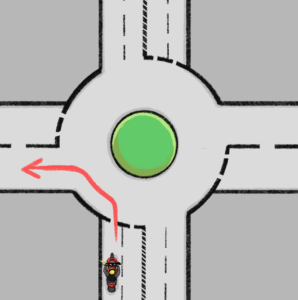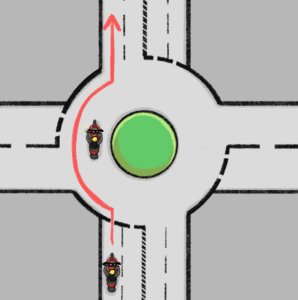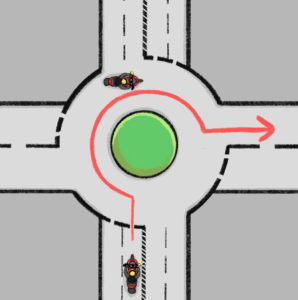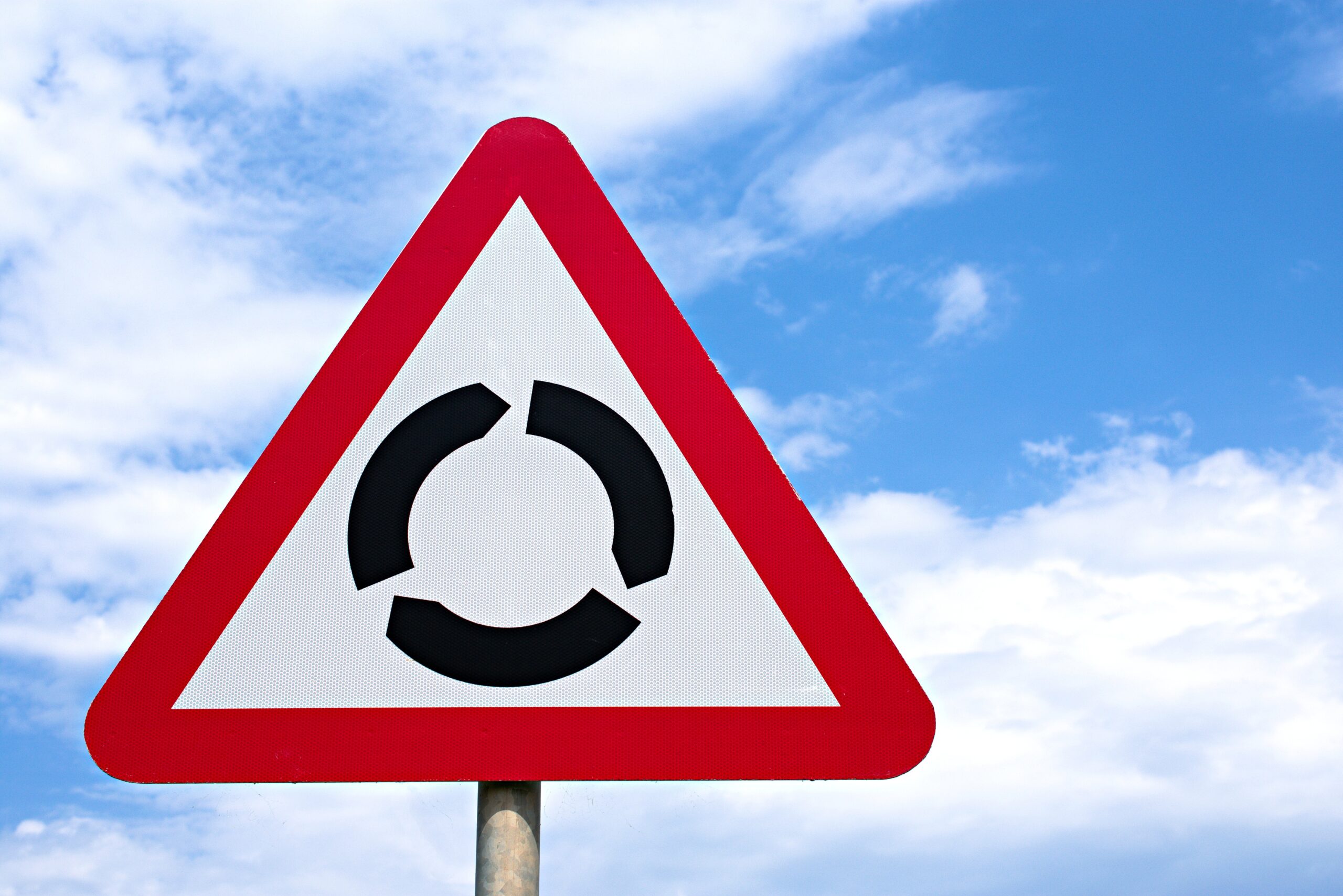Motorcyclists are vulnerable road users – and never more so than when we're tackling roundabouts.
Too often motorbikers come a cropper as other road users fail to spot us as they are swapping lanes or looking for their exit.
We know it's not fair that we pay the price for other road users' errors, but as we're the ones who cop the worst injuries, we have to take extra steps to make sure we stay safe.
So how can we make roundabouts just another part of our journeys?
The secret is to stay vigilant and make sure we’re following the roundabout rules at all times. Assuming other road users haven’t seen us may sound paranoid but it's a good assumption to make. Car and van drivers often miss the slim silhouette of a motorbike as they enter a roundabout or make a move to leave it.
That’s why it’s good advice to always expect the unexpected: watch out for the car that emerges on to the roundabout into your path, or the van that looks to cut across you to take an exit.
At the same time, we can keep ourselves safer by being perfect on the way we handle roundabouts, always being in the correct lane, indicating in good time, using our mirrors – and making sure we grab those important ‘lifesaver’ last looks over our shoulders, to check the blind spot, before we change lanes.
Top tips for new riders
- Remember to Give Way
At a roundabout, we MUST give way to oncoming traffic, which will always be approaching from the right. If, as we approach the roundabout, it is obviously clear of other traffic, we can continue without stopping, but do so carefully and at low speed that keeps us in full control.

- Turning left
On approach to a roundabout, if we want to turn left or take the first exit:
- If not already in the inside lane, check mirrors, and if safe, signal left
- Perform a lifesaver before changing lanes: check the left shoulder blind spot
- If all clear, move into the left lane
- Enter the roundabout when safe to do so, remembering that we need to Give Way to traffic coming from our right. Keep the left indicator on, and stay left
- Take the exit. Check the right shoulder as we pull into the new road, for cars trying to enter from our right and overtaking
- If the manoeuvre has not automatically cancelled the indicator signal, switch it off and continue on the new road.

Travelling straight ahead
When approaching a roundabout, if we intend to follow the road ahead:
- Get into the left-hand lane as above, but once there, we don’t need to signal on approach
- Unless road markings say otherwise, keep left
- Enter the roundabout if safe to do so. As we pass the exit before ours, signal left.
So if we want to leave the roundabout at the second exit, signal left as we pass exit 1.
- Pull on to the new road, remembering to check the right shoulder for any cars overtaking on our right.

Turning right
Turning right from a roundabout is more complicated and requires great care.
If we are looking to turn right, via a third exit:
- On approach, check mirrors and signal right.
- Before making a move, perform a lifesaver: check the right shoulder blind spot for any oncoming traffic
- If safe, move into the right-hand lane and keep signalling right.
- Check for oncoming traffic from the right, looking to Give Way is anything is coming.
- Proceed onto the roundabout when safe, continuing to signal right, and staying to the right.
- As we pass the exit before the one we intend to take (ie, if our exit is the third, as we pass the second), indicate left.
- Check mirrors and the left shoulder blind spot
- As we pass the entrance to the road before our turn, switch the indicator to signal left and check the left shoulder blind spot.
- If clear, move into the left-hand lane. Keep the indicator on and if safe, enter the new road.
- Watch for other road users looking to undertake on the left by checking mirrors and the left shoulder blind spot.
- Continue on the new road.
Roundabouts can be nerve-wracking when we first ride into one. That’s why on motorbike compulsory bike training courses (CBT), the trainer should make sure trainees use several, so they gain experience and confidence in how to enter and exit them safely.
What’s important to remember is to signal clearly and early, keep observation sharp, watch our speed and be prepared for the unexpected.
Finally, remember those all-important lifesaver looks over our shoulders, to make sure nothing has crept into the blindspot.
Illustrations kindly provided by: Amy Beswick

